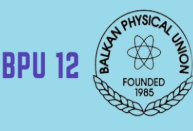https://doi.org/10.1140/epje/s10189-022-00175-5
Regular Article - Living Systems
Active T1 transitions in cellular networks
1
Max Planck Institute for the Physics of Complex Systems, Nöthnitzer Str. 8, 01187, Dresden, Germany
2
Department of Civil Engineering, Indian Institute of Technology Bombay, 400076, Powai, Mumbai, India
3
Max Planck Institute for Molecular Cell Biology and Genetics (MPI-CBG), 01307, Dresden, Germany
4
Center for Systems Biology Dresden, Pfotenhauerstrasse 108, 01307, Dresden, Germany
5
Cluster of Excellence, Physics of Life, TU Dresden, 01307, Dresden, Germany
Received:
22
November
2021
Accepted:
14
February
2022
Published online:
23
March
2022
In amorphous solids as in tissues, neighbor exchanges can relax local stresses and allow the material to flow. In this paper, we use an anisotropic vertex model to study T1 rearrangements in polygonal cellular networks. We consider two different physical realizations of the active anisotropic stresses: (i) anisotropic bond tension and (ii) anisotropic cell stress. Interestingly, the two types of active stress lead to patterns of relative orientation of T1 transitions and cell elongation that are different. Our work suggests that these two realizations of anisotropic active stresses can be observed in vivo. We describe and explain these results through the lens of a continuum description of the tissue as an anisotropic active material. We furthermore discuss the energetics of the dynamic tissue and express the energy balance in terms of internal elastic energy, mechanical work, chemical work and heat. This allows us to define active T1 transitions that can perform mechanical work while consuming chemical energy.
The authors Charlie Duclut and Joris Paijmans contributed equally.
Supplementary Information The online version contains supplementary material available at https://doi.org/10.1140/epje/s10189-022-00175-5.
© The Author(s) 2022
 Open Access This article is licensed under a Creative Commons Attribution 4.0 International License, which permits use, sharing, adaptation, distribution and reproduction in any medium or format, as long as you give appropriate credit to the original author(s) and the source, provide a link to the Creative Commons licence, and indicate if changes were made. The images or other third party material in this article are included in the article’s Creative Commons licence, unless indicated otherwise in a credit line to the material. If material is not included in the article’s Creative Commons licence and your intended use is not permitted by statutory regulation or exceeds the permitted use, you will need to obtain permission directly from the copyright holder. To view a copy of this licence, visit http://creativecommons.org/licenses/by/4.0/.
Open Access This article is licensed under a Creative Commons Attribution 4.0 International License, which permits use, sharing, adaptation, distribution and reproduction in any medium or format, as long as you give appropriate credit to the original author(s) and the source, provide a link to the Creative Commons licence, and indicate if changes were made. The images or other third party material in this article are included in the article’s Creative Commons licence, unless indicated otherwise in a credit line to the material. If material is not included in the article’s Creative Commons licence and your intended use is not permitted by statutory regulation or exceeds the permitted use, you will need to obtain permission directly from the copyright holder. To view a copy of this licence, visit http://creativecommons.org/licenses/by/4.0/.





